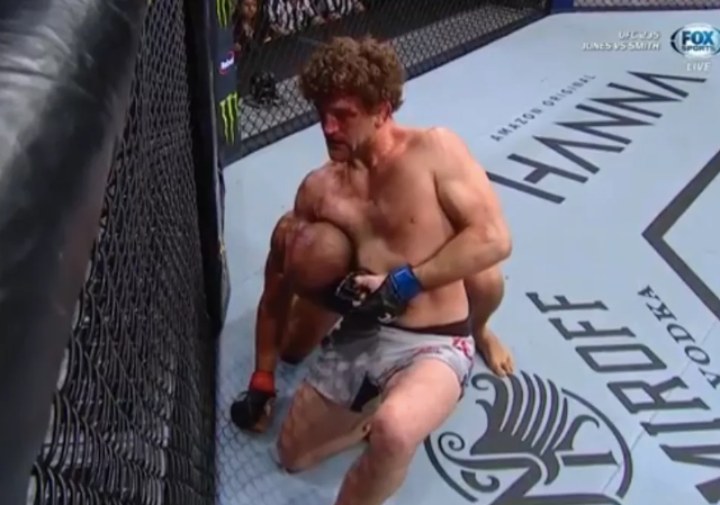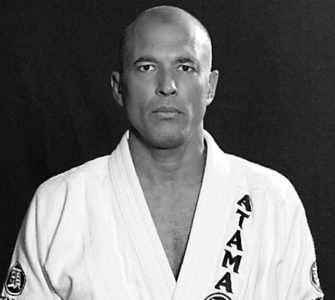Guest post by Evolve MMA, Asia’s premier championship brand for martial arts. It has the most number of World Champions on the planet. Named as the #1 ranked martial arts organization in Asia by CNN, Yahoo! Sports, FOX Sports, Evolve MMA is the top rated BJJ gym in Singapore.
In Brazilian Jiu-Jitsu, to control the head means to control the body. One of the key principles in BJJ is that wherever the head goes, the body follows. Head control is useful when passing the guard or securing a dominant position, and even more so in applying submissions. Attacking the head and neck using chokes from unusual positions can be an effective way to take a resisting opponent out. Today, we will talk about one of the most vicious chokes in BJJ, the bulldog choke.
What Is The Bulldog Choke?
At first glance, the bulldog choke is the choke an untrained person will most likely apply just by instinct alone. Somebody grabs them from behind with the opponent’s head low on their torso, and they more than probably hold the head as they barrage them with strikes using their free hand or even just squeeze with all their might. This is inefficient and puts an untrained person at risk as the opponent can slam them on the ground or take their back if their head control slips. This is why learning the proper choking mechanics and body positioning is critical to safely and effectively apply this choke to take your opponents out.
The bulldog choke is a powerful choke when applied correctly. It is a type of neck crank and may seem like a mix of a guillotine and a rear naked choke applied in the opposite direction, with your body in front of the opponent. Just like the guillotine and rear naked choke, it puts pressure on the carotid arteries of the neck. It can block the airflow depending on the positioning of the arms while applying the choke, making it like a combination of a blood choke (strangle) and an air choke.
This choke may appear risky and unconventional as it is applied with no hooks or wrapping your legs around the opponent, giving you no other control besides the head and neck. Though it may seldom work against a trained opponent, you can set it up by applying the choke just when you are about to lose back control to catch your opponents off guard, making it a viable option when you end up in the position. However, remember to always control your opponents when in a dominant position, as it is one of the main pillars of BJJ.
Bulldog Choke In Action
Before we learn how to apply the bulldog choke, let’s first see the choke being used in the highest level of competition. Ben Askren, a former Bellator and ONE Championship World Champion, submitted MMA legend Robbie Lawler in his crossover debut to UFC using the bulldog choke.
Ben is an accomplished grappler and former U.S. Olympic Wrestling Team member known for his unstoppable wrestling skills in the cage. After bringing Lawler to the fence, Ben managed to take him down while controlling Lawler’s hand and legs on the ground. As soon as Lawler turned away, looking to escape, he allowed Ben to maintain a chest-to-back connection with a seatbelt grip. Ben swiftly transitioned his choking arm using an S Grip.
While securing the choking grip, Lawler turned, trying to face Ben, putting Ben out of position. Remember that Ben has no hooks to secure the back mount. While controlling Lawler’s head using the choke with an S grip, Ben eventually lands in front of Lawler, which lands him in the position of the bulldog choke. Ben, known for having a grip enough to crush two watermelons with his arms, did not hesitate and quickly leaned his body forward and tightened up the choke to submit Robbie Lawler in the first round.
How To Perform The Bulldog Choke?
Although we mentioned earlier that the bulldog choke is like a mix of a guillotine and rear naked choke, be careful when using this choke with an RNC grip, as you can get flipped over. The idea of the bulldog choke from the back mount is if you have the seatbelt grip and the opponent tries to escape to your underhand side, you can initiate the bulldog choke.
Assuming that you have the back mount and on the underhand side of the seatbelt while controlling the opponent’s neck with your top arm (choking arm). The opponent will usually escape to the underhand side by turning that way with their shoulder to face your body. You can secure the position if you have your wrist grip on the opponent with your underhand. The wrist grip with your underhand stops them from turning their shoulder on your underhand side and makes it difficult for the opponent to turn their body down.
Keep your torso pressing on the opponent’s back while maintaining the wrist grip, as the opponent can scoot away and pull their arm out. A lot of times, the opponent might initiate a scramble by turning to your underhand side. When this happens, turn back up and lock your choking hand (top arm) with your underhand for the bulldog choke. You can do so by closing your hands with a Gable or S Grip. Once your grips are secured, finish the bulldog choke by sitting your legs out in front of the opponent’s body and leaning back on them.
Sprawling away prevents the opponent from closing the gap and helps block their attempt to shoot forward and attack with takedowns. Leaning back on the opponent gives you more leverage and enables you to apply stronger pressure, thus, making the choke tighter. While the bulldog choke is uncommonly seen in competitions, it is unstoppable when synced in properly.
Conclusion
The setup is critical in making the bulldog choke work. Not applying hooks when on the back mount forces the opponent to turn towards you, which you can use as bait. While it is mainly applied from the back mount when the opponent turns on your inferior (underhand) side, it would be best to work both sides. Be careful when doing the choke in training, and work on the proper execution of the technique to prevent injuries.


















